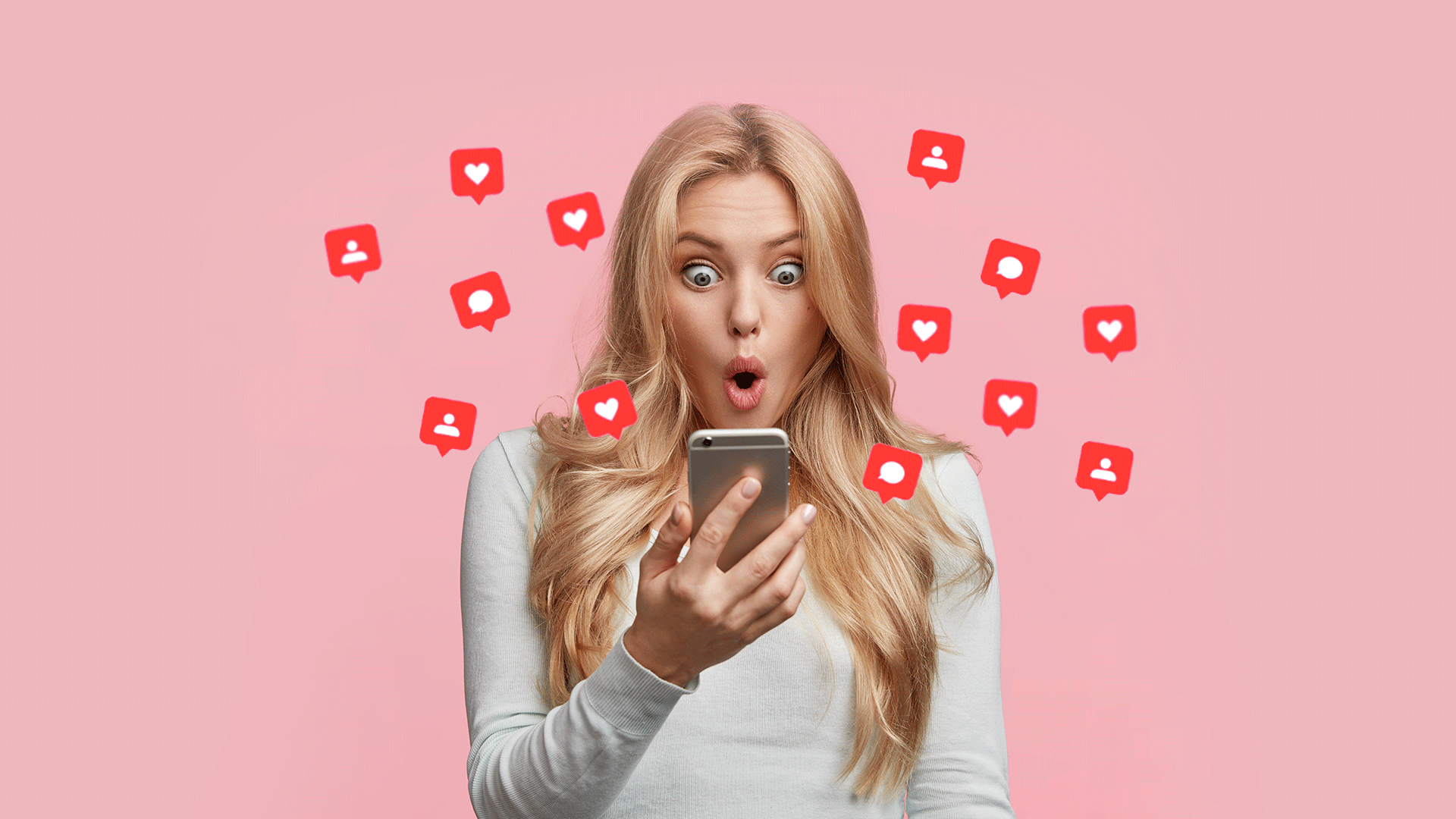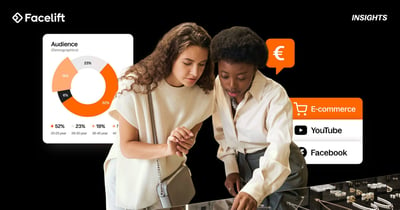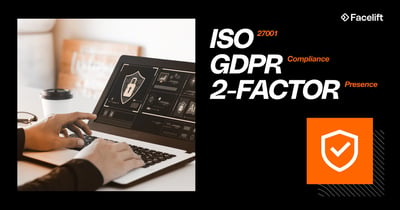Social media management done right involves a whole basket of KPIs to keep an eye on. A good Social Media Manager needs to be able to prioritize certain KPIs over others and ensure that the most essential are being closely monitored and acted upon.
Arguably the most important KPI for measuring the success of social media pages in general is engagement, but on Instagram it's extra-important. Because the platform does not offer as many onboard analytics tools as some of its counterparts, such as Facebook, Instagram managers need to pick and choose where to fight their battles and engagement rate is a battle you need to win!
What is Instagram engagement?
Engagement is a broad term that includes several different smaller KPIs. What they have in common is that they all refer to any manual action that a social media user takes on a page or its posts.
These include but aren't always limited to:
- Clicks (on links, your page, more info, subscriptions, text expansions, etc.)
- Comments or direct messages
- Likes
- Shares
- Bookmarks or saves
Why is Instagram engagement an essential KPI?
Engagement on any platform is essential because it is the truest indicator of both the way your content is being received by your followers, as well as the "quality" of your followers themselves.
Reception of content is really the only way for you to know whether anything you're publishing is having an impact at all. If it's not, you can act accordingly and make changes until it does.
What good are a million followers if they never engage?
Why is Instagram engagement so valuable?
As we've established, engagement is everything on Instagram.
This is because the platform's internal algorithms emphasize high-quality content over inferior quality. The algorithm prioritizes the content from pages that appear to be highly engaging, and it measures this based on the rate of likes, shares, and comments that individual posts and stories receive.
Thus, your engagement rate is very valuable and it's common that a smaller page with high engagement with relation to its follower count would still receive greater organic reach than one with more followers, but low activity.
Because inactive profiles, bots, and other "low-quality" followers are useless for generating engagement, they can be actively harmful to your rate. Instagram could determine that your substantial number of followers just isn't that into you. It decides that this is probably because you aren't making particularly good content, and therefore you don't deserve the reach of pages with better content.
Better content makes Instagram's users happier, and unhappy users stop using their platform, which means they stop seeing ads, and thus stop making Meta money.
If engagement is so important, how do we optimize it?
First, relevance:
Your content needs to speak to your audience. If they aren't into it, they won't engage with it. Luckily, this is an easy thing to figure out. For most brands, followers are there for pretty obvious reasons. For a cosmetics brand, people are there because they like the products, for a politician, they're there because they like what they have to say, and for artists and musicians, they're probably fans of the work. Each of these organizations just has to keep doing what they do to create relevant content.
Creating buyer personas can help digital marketing teams identify these groups.
Second, production value:
Here, we're referring to the actual quality of your content. Does it look good? Are your photographs or videos taken by skilled professionals? Are they edited by graphic designers and scripted by experienced writers? Have they been researched for information accuracy and completeness? Is your creative team sticking to your brand's image and style? Do you have a unified tone and theme?
On the other hand, in recent years, there has also been a turn away by some businesses from this carefully curated image in exchange for a more "realistic" and raw graphic experience. This is particularly common on Instagram Stories, where it may still behoove businesses to be a little less curated, and a little more simple and loose.
Don't be too afraid to get a little edgy
Historically, businesses have had a certain conservatism that has led them to avoid rocking the boat, so to speak. While this is still largely true, these days it is more and more common for companies to get in on the madness, sharing their values, leaving snarky comments, and publishing more aggressive or shocking content that may have once been considered inappropriate.
This doesn’t mean that you have to go over-the-top with your content, but it can be beneficial for many companies to appeal to followers on a more human level, rather than a stuffy corporate one.
Engagement goes both ways
Social media has created direct and highly visible dialogue between everyday users and the brands they love (or hate). There is an expectation now that companies will not ignore their followers on social media and will in fact react to comments and even engage with other pages themselves, directly liking, commenting, and even sharing others' content in turn.
This kind of activity makes a brand seem more approachable, boosting engagement in a very direct way. The Holy Grail of this sort of inter-page engagement is that other businesses in related industries, or influencers, take notice and begin conversing themselves. These interactions give increased exposure to everyone involved, and even help create good will between businesses!
Stay active!
If there's no content, there's nothing for anyone to engage with. This leads to followers losing interest, forgetting your page, and of course Instagram's internal algorithms believing your account to be inactive, giving it lower priority.
While there is no real rule-of-thumb as to a minimum posting frequency, we would recommend creating a regular content schedule and sticking to it as much as possible, and publishing fresh content at the very least every 2-3 weeks.
Limit promotional material
As a business you clearly want to promote products or services on your social media pages, and that's okay, but it must be done tastefully and sparingly. People aren't on social media because they love to see advertisements. They're there to be informed, entertained, and to keep in touch with the people and things they care about.
Some brands and industries have an easier time with this than others. It's often more difficult for B2B companies to market their products or services on Instagram in a traditional way than it is for fashion companies, for instance, which are highly visual and marketed directly to a larger segment of social media users.
One cool way to avoid being overly promotional is to set up a thematic "grid" on Instagram. This means carefully curating your company's Instagram page to have a certain theme and unified style. You can check out Facelift's Instagram profile here for an example of this.
How to monitor Instagram engagement
We’ve established the individual KPIs that contribute to engagement: likes, shares, comments, etc.
Instagram comes with onboard analytics tools that are accessible by any business or creator page under "Insights" on the same tab as settings.
However, these metrics are relatively basic and only easily accessible on mobile devices. Since making social media managers pull out their personal phones to check your business's Instagram analytics is weird, not especially report-friendly, and is just otherwise cumbersome, it's often better to turn to third-party analytics software.
If you're a cave-dweller and prefer working with Paleolithic good-old-fashioned spreadsheets, that is also an option.
Spreadsheet tools such as Google Docs or MS Excel can also be used to create tables documenting your posts' performances based on the information you find in your insights tab.
Make sure to update your document regularly to reflect changes in your Instagram KPIs and be sure to make the document centrally available to your social media manager(s).
How to prioritize Instagram engagement KPIs
The most essential engagement KPIs for your business will vary, but when it comes to engagement, we believe that the most common order of value should be something like:
Shares > comments > bookmarks > likes.
We chose this order because shares directly affect your organic reach in the most immediate and tangible way possible.
Both comments and shares are a direct indicator of the value followers perceive in a piece. Comments usually require the most "effort" on the part of the individual and this effort is an indicator that someone really likes your content (or really hates it).
Bookmarks are an overlooked engagement KPI, but are common on Instagram, especially when followers are in a hurry and don't have time to delve into your content or want to remember something great like a cool product. This KPI creates a secondary (and effortless) touchpoint, is a type of remarketing, and can often mean that a visitor is thinking of converting.
Likes are the least valuable because they aren't a very indicative metric. They are important because they still count as an instance of engagement, boosting the algorithm's impressions of your content's quality, but they are low-hanging fruit and require next to no effort or thought on the part of the visitor. Still, they are the easiest to get, and can be a very straightforward indicator of public perception.
What does "good" engagement look like?
It's difficult to make a universal statement about what good Instagram engagement rates are, and they will definitely change depending on your industry and business type.
It may seem low, but shooting for a target of between 2 and 5 percent engagement on Instagram is a decent place to begin. According to Find Your Influencer, 1 to 3 percent is considered standard for popular influencers.
Most social media algorithms these days are designed to nudge businesses to pay for reach by investing in sponsored posts. While paid social will obviously return greater engagement rates, organic reach and engagement is by definition free, and of equal or even higher value because you generally know that the people there are by and large true fans who visit your page and follow your content because they genuinely find value in it.
For every 100 followers, if just a handful "like", comment, or act on it in some other way, it could be considered a success!
You can calculate your overall 30-day engagement rate by adding up all instances of engagement (likes, comments, etc.) and then dividing it by your number of followers. Multiply this number by 100 and voila, that's your engagement rate. This number isn't perfect because as we said, a share or a comment is worth more than a like, but it's still a good indicator of the overall attractiveness of your work to your target audience.
Instagram's own Insights tab, found directly in the app, can tell you your engagement numbers, and you can also find them in Facelift Cloud!
In fact, we've just released all-new post performance insights so you can stay on top of your Instagram engagement more easily than ever! Now, Facelift Cloud users are able to enhance their analytic capabilities to get an even more concrete image of Instagram content's successes and shortcomings.
Conclusion
Engagement is the most important Instagram KPI for assessing post performance and accelerating page growth and reach.
A low engagement rate has the doubly negative effect of digging your page into an algorithmic hole. If you're creating unpopular content that isn't getting engagement, it will continue to generate less and less reach, making it more and more difficult to resurface later.
Still, even if this happens, there's almost always a way to improve, and Instagram redemption is usually possible!
Facelift Cloud can help you keep on top of your engagement KPIs on all major social media platforms, including Instagram. Included are our powerful reporting tools that make providing a team with a holistic performance overview easier than ever.
You can try Facelift free for two weeks without commitment by following this link. Give it a shot!
While you're at it, you should definitely follow us on Instagram!





